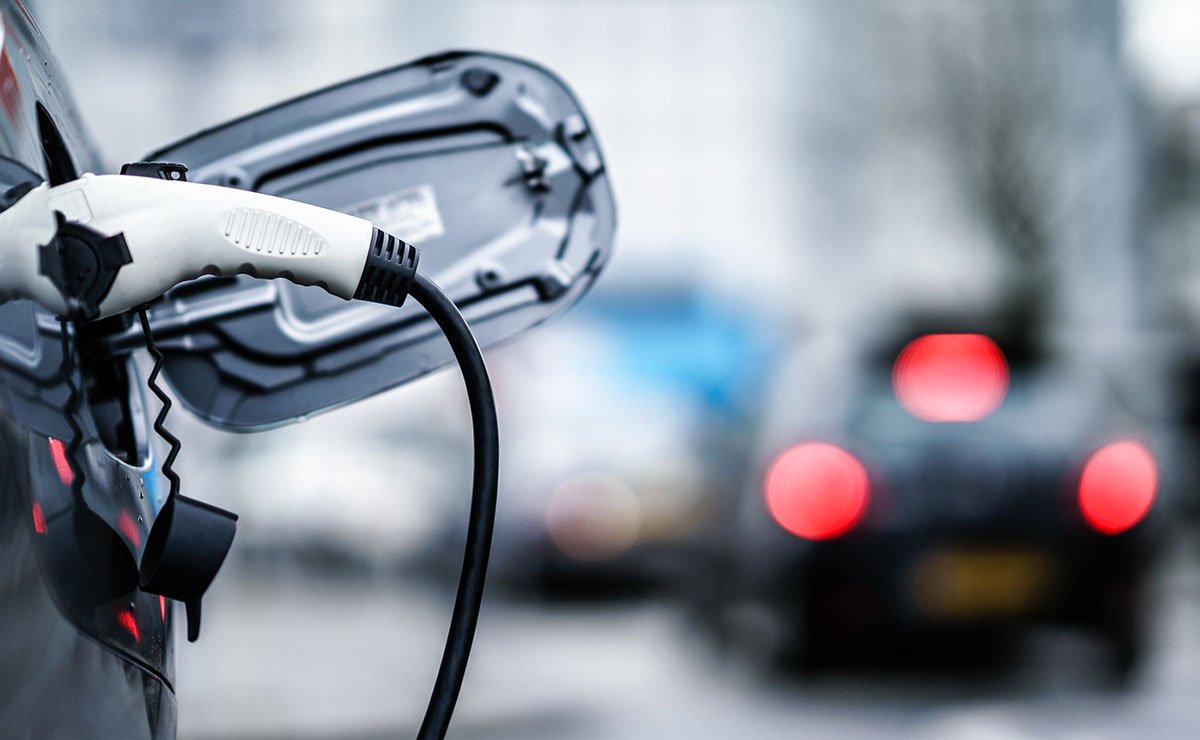| Shift to EVs would reduce public health costs by billions, lung association says |

The traffic ceased. The skies cleared.
Even with all the tumult wrought by the coronavirus, one of the ancillary effects of the crisis was its contribution to improved air quality in major cities across the world. As commuters stayed home, their vehicles stopped spewing pollutants.
In March, Los Angeles, for example, experienced its longest stretch of “good” air days in at least four decades, per data maintained by the EPA. Not engulfed in a brown haze, residents could see for miles.
In many cities, the opportunity to experience life with cleaner air brought greater scrutiny of the costs of living with smog and pollution and of transportation’s contribution to the problem.
A first-of-its-kind report issued this week by the American Lung Association details those societal ramifications, and importantly, says $72 billion in public-health benefits can be achieved with a transition to electric vehicles.
A widespread move to zero-emission transportation would result in 6,300 lives saved, and prevent 93,000 asthma attacks and 416,000 lost work days, the report says. Those health burdens are disproportionately placed upon poor and minority communities, according to the report, titled “The Road To Clean Air.”
“Low-income communities and communities of color often face greater exposures to transportation pollution, not just from tailpipes, but from the whole process of extraction, refining and transport of fossil fuels,” says Harold Wimmer, CEO of the American Lung Association. “By moving away from this system to electric vehicles powered by clean energy, we can transform our nation’s health and future.”
While there are other culprits, the report notes transportation contributes more than half the total ozone and particle-forming nitrogen-oxide emissions and represents the “largest source of carbon pollution in the United States.” Should the widespread adoption of EVs occur, the report finds, NOx emissions would be largely eliminated, while directly emitted fine-particle pollution is reduced by more than 53,000 tons in 2050.
In some fashion, the report’s singular focus on EVs omits a bigger picture. Electric vehicles themselves are not a cure-all for transportation-related public-health concerns. Certainly, shifts away from single-occupant vehicle trips toward a range of public-transit and non-motorized options would only accelerate broad public-health gains.
Further, the notion that electric vehicles could leap from a percentage of sales that currently languishes in the low single digits to something close to 100 percent in enough time for the fleet to turn over while Americans are hanging onto their cars longer than ever stretches plausibility.
In today’s Decarbonizing Transportation newsletter, Andrew Salzberg asks the question of “How Fast Could We Go Electric If We Really Wanted To?” Without spoiling his examination, the answer is generally not fast enough.
Still, “Road To Clean Air” brings to bear a sober look at the public-health implications of delays in that transition.
And it arrives when COVID-19 has provided a visceral, if fleeting, glimpse of what life might look like if cities were freed from their daily blanket of smog.
— Pete Bigelow
What you need to know
Uber safety driver charged The safety driver operating an Uber self-driving test vehicle that struck and killed a pedestrian in March 2018 has been charged with negligent homicide. A grand jury returned the charge against Rafael Stuart Vasquez, 46, in late August, officials with the Maricopa County Attorney’s Office said Tuesday. Vasquez, also known as Rafaela, pleaded not guilty during an initial court appearance Tuesday in Maricopa County Superior Court. Vasquez was released and will wear an ankle monitor.
Self-driving startup tackles food deserts On one side of 19 lanes worth of interstates, freeways, highways and exit ramps sits Houston’s Third Ward, a place where fast food joints are plentiful and more than 4 in 10 residents are classified as obese. On the other side? The nearest supermarket. As has been the situation in many cities, highway construction — in some cases decades ago — had a side effect: It isolated, even destroyed, neighborhoods. It was one factor that turned the Third Ward into a food desert, an area where a high proportion of residents have limited vehicle availability and trouble accessing markets and fresh food. If transportation has been part of the problem because a physical barrier prevents residents from getting to supermarkets, technology developers and city officials hope it may be part of a solution.
Cadillac requiring dealers to make upgrades for EVs Cadillac on Wednesday told its 880 U.S. dealers that they will need to invest at least $200,000 each for electric vehicle chargers, tooling and training to continue selling the brand’s vehicles beyond 2022. The brand plans to launch its first EV, the Lyriq crossover, in late 2022, and have a fully electric lineup by the end of the decade. “Now’s really the time to start engaging with our dealers in preparation for that,” Rory Harvey, vice president of Cadillac sales, service and marketing, told Automotive News. “There’s a lot of planning that has to be put in place to make sure they’re absolutely ready.“
Roundup
Kia to launch first dedicated EV next year.
ChargePoint nears deal to go public, report says.
GM to develop ‘family’ of EV drive systems, motors.
LG Chem to approve plan for battery business spinoff, report says.
Circle K owner plans EV charging push in U.S., Canada.
BMW vehicles to use new software to ‘feel’ road conditions.
The Hummer EV will break cover on Oct. 20.
Polestar calls out industry’s carbon footprint ‘transparency problem.’
Maserati plans 6 EV offensive by 2025 to capitalize on ‘BEVolution.’
Brain food
Does Nikola have the capability to deliver on its promises?
Last mile
GM explores market for electric aerial taxis, report says.